If Elon Musk has his way, in the future we’ll all be storing renewableelectricity inside big banks of lithium-ion batteries. But let’s not forget the energy storage situation today. In the United States, 97 percent of utility-scale storage in 2014 was in pumped-storage hydroelectric plants, according to research by Oak Ridge National Laboratory, in Tennessee.
In traditional pumped hydro, a dam separates a lower reservoir from an upper reservoir. When a utility company needs to store energy, the system pumps water from the bottom to the top. It generates electricity when water flows back down through a turbine. In 2015, Citibank estimated that the cost of power from pumped hydroelectric was about 5 percent of the cost of grid-scale battery-stored electricity. The problem is that there are many places that “consume high amounts of power but don’t have geological opportunities to build conventional pumped-storage plants,” says Jochen Bard, an energy processing technology manager at the Fraunhofer Institute for Wind Energy and Energy System Technology (IWES), in Germany.
In 2017, a number of new pumped-hydro technologies should achieve milestones. They aim to bring the low cost of the technology to geographies that ordinarily wouldn’t allow it. Here are four you might hear about:
Photo: Fraunhofer IWES Energy system technology
The Concrete Bunker
Stensea (Stored Energy in the Sea) is a hollow concrete sphere with a built-in pump turbine. It sits on the seafloor and, in its discharged state, is filled with water. To store energy, the system uses electricity to pump water out into the sea. When discharging, the pump works in reverse, generating electricity as water refills the sphere.
In November, Fraunhofer IWES installed a 3-meter-wide pilot sphere in southern Germany’s Lake Konstanz at a depth of around 100 meters. It ran a successful four-week test of the system with full charging and discharging. Following a year-long feasibility study, the team is now developing the concept for a 5-megawatt, 20-megawatt-hour full-scale system. The spheres will have certain geographic needs: a water depth from 600 to 800 meters and a surface flat enough to prevent tilting. Potential sites for such a project include locations in the Mediterranean Sea, the Atlantic Ocean, and the Norwegian trench.
Photo: Hydrostor
Compressed-Air Bags
Hydrostor’s system consists of weighted-down balloonlike bags that are placed underwater and connected to a system on the shore. To store energy, it uses electricity to compress the air and fill the underwater bags. (A heat exchanger and underwater bath capture heat lost during compression to help preserve efficiency.) When electricity is needed, the air flows back out of the bag into a machine that expands it to drive a turbine. [See “Stashing Energy in Underwater Bags,” IEEE Spectrum, August 2014.]
Hydrostor commissioned a 660-kilowatt pilot plant with undisclosed storage capacity in November 2015 at Toronto Island, and the company is currently optimizing the performance. It has proposed new projects in Canada, the United States, and Mexico. And it’s now constructing a 2-MW, 7-MWh facility in Goderich, Ontario, that uses underground salt caverns instead of bags, which could be followed by a 1-MW, 6-MWh storage system with bags in Aruba later this year.
Photo: DNV GL
Energy Island
In DNV GL’s energy island concept, a dike encloses a 10- by 6-kilometer section of the North Sea off the Dutch coast [artist’s rendering, left]. To store electricity, the system pumps interior water up and out to sea. Letting water flow through a turbine on its way back generates electricity.
Unlike with traditional pumped storage, the inner lake can be built out in the sea as long as the seafloor has a sufficiently large layer of clay to prevent the ocean from seeping back in. There would also be some trade-off between more energy storage gained from a deeper ocean and increased construction cost.
For now, this energy island is only in the concept stage. DNV GL, based in Norway, is running a business case analysis with partners in the Netherlands and discussing plans to build a large-scale system. It hasn’t settled on a power rating or storage duration yet, but a small-scale prototype wouldn’t work for something like this, according to the company.
Photo-illustration: Naturspeicher
Wind Turbines With Water Storage
In a system by Naturspeicher and Max Bögl, wind turbines are built on the top of a hill with a pair of water storage reservoirs at their bases that raise them by an extra 40 meters above a typical turbine. A man-made lake sits at the bottom of the hill; energy is stored when the water is pumped up into the reservoirs, and electricity is produced when the water falls back down to the lake.
Adding an extra 40 meters of height should boost generation about 25 percent, but it also requires weight balancing that would ordinarily be expensive. In this case, however, the company says, water in the reservoirs naturally balances the mechanical load on the cheap.
The system “integrates harmoniously into the landscape without major disruption,” Naturspeicher says. It plans to have a wind farm on line by the end of 2017 in the hills of the Swabian-Franconian Forest, in Germany, with pumped storage following by late 2018. It expects the system, when completed, to store 70 MWh and deliver up to 16 MW.
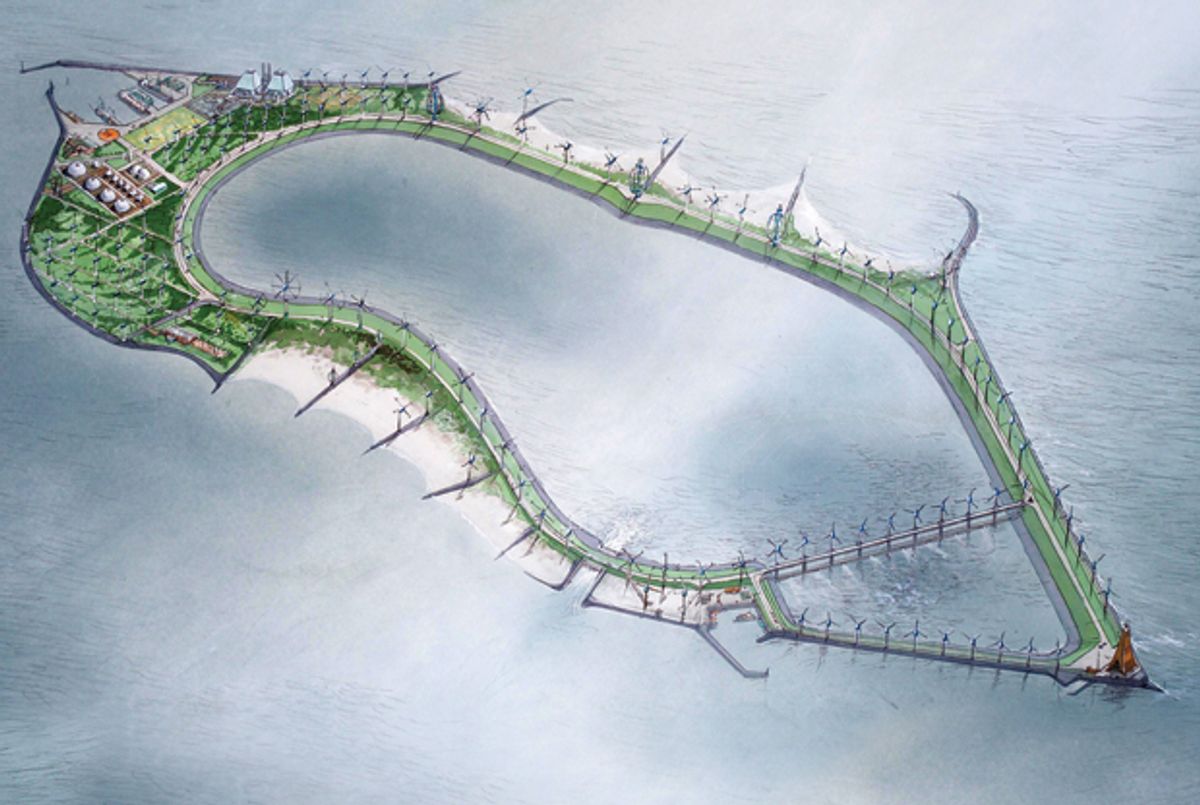
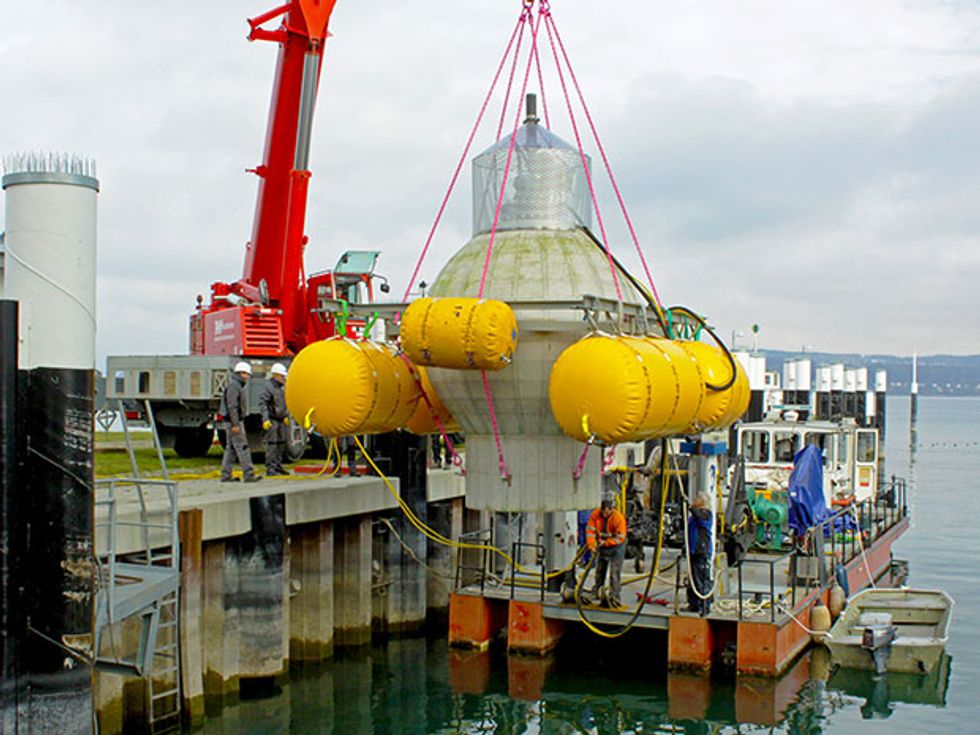 Photo: Fraunhofer IWES Energy system technology
Photo: Fraunhofer IWES Energy system technology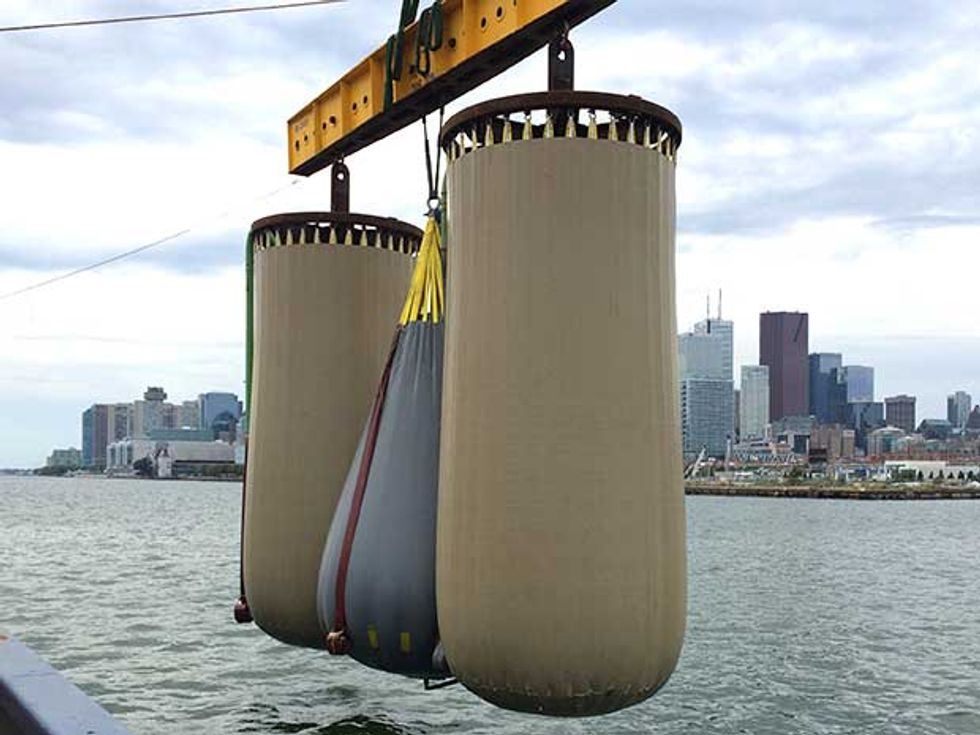 Photo: Hydrostor
Photo: Hydrostor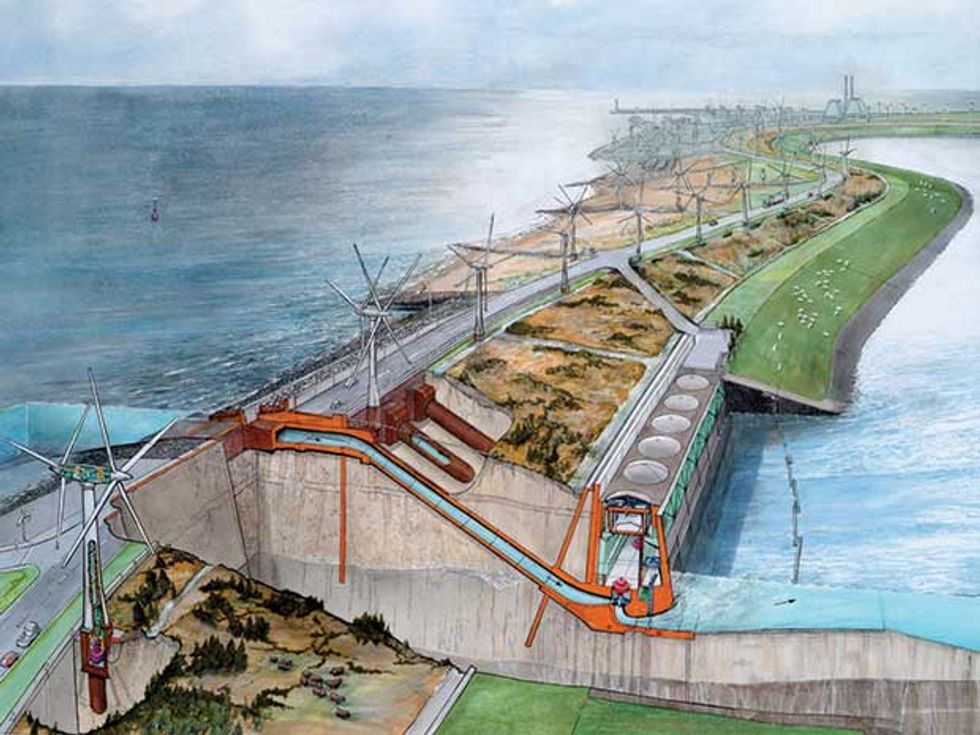 Photo: DNV GL
Photo: DNV GL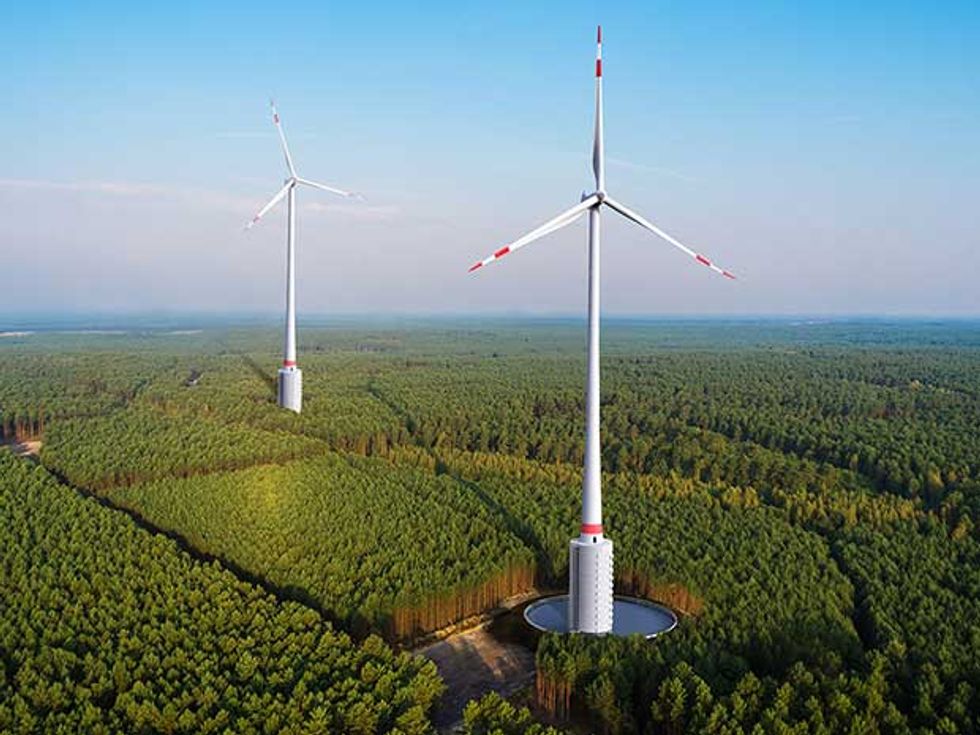 Photo-illustration: Naturspeicher
Photo-illustration: Naturspeicher